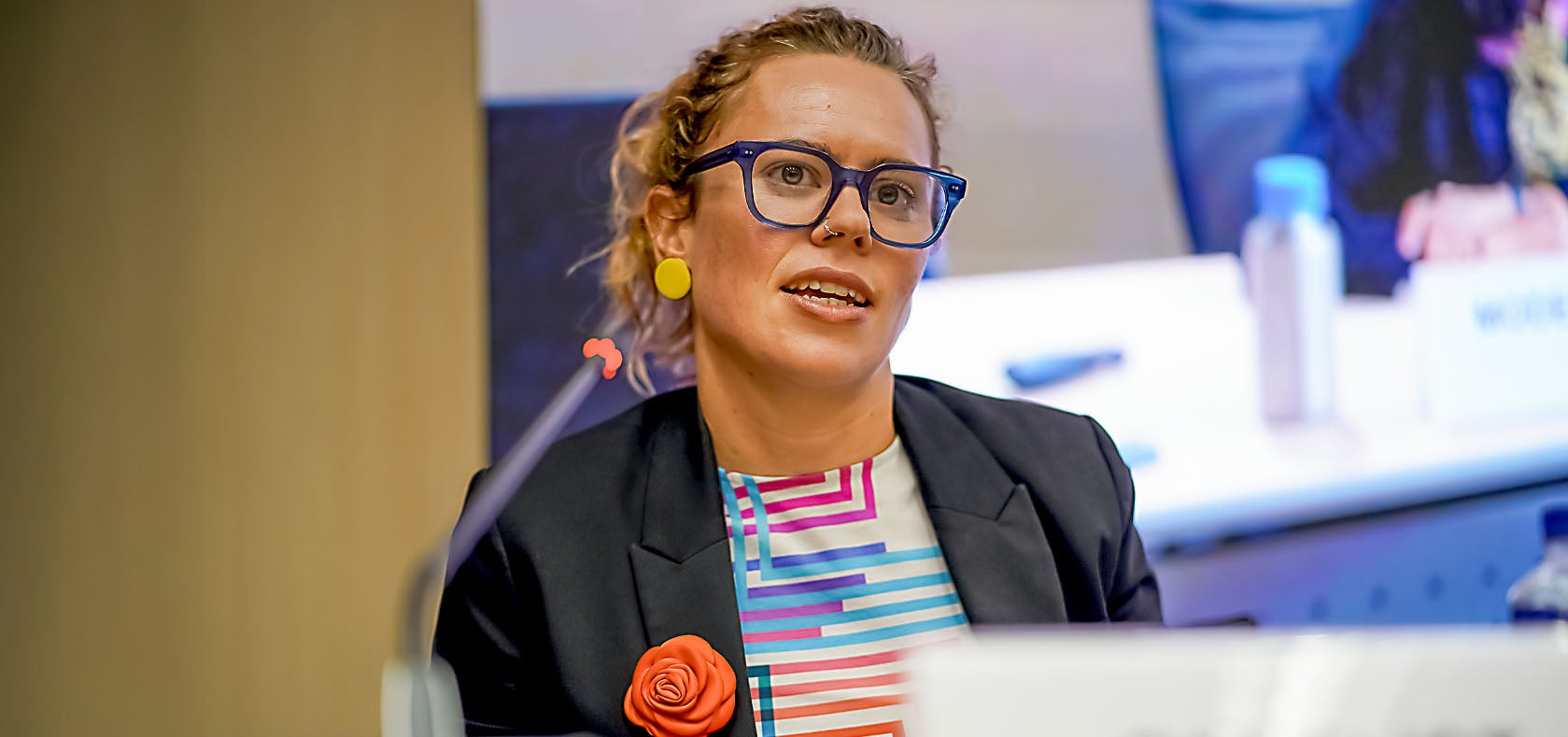Cara Gleeson: “Preventing violence requires more than short-term programmes or one-off campaigns. It takes generational change”
Date:
Cara Gleeson is Director of the Our Watch Institute, the training and implementation arm of Australia’s national organization for the prevention of violence against women. With nearly 15 years of experience in Australia and internationally, she currently oversees the Institute’s specialist teams in delivering evidence-based, practical support to embed gender equality and prevent violence across workplaces – from universities and media companies to community groups and sporting bodies – and communities. Cara spoke to UN Women following her participation in the 12th Asia-Pacific Forum on Sustainable Development, where she spoke at the side event Preventing Violence against Women: Evidence-Based Solutions and Promising Practices from the Asia and the Pacific Region, co-organized by UN Women, the UN Population Fund, and the UN Economic and Social Commission for Asia and the Pacific.

What inspired you to dedicate your career to preventing gender-based violence, and how this has your perspective evolved over time?
Exposure to strong feminists in my early life inspired me to take a path in my studies and career that felt normal, organic and right to me. My mum and one of her friends discussed women’s rights, politics and globalization around us kids from a young age and I always found those conversations riveting and exciting.
My perspective is continually evolving and often humbling as I grow older and have more exposure to different people’s experiences, and I learn more and more about how systems of oppression manifest and can be challenged to create transformative change.
What are the most effective strategies for shifting workplace culture, and how do you engage organizations that may be hesitant to change?
We meet leaders and organizations where they are at, believing that connection, knowledge building and giving the skills to change leads people to change.
Hesitancy is a common feature in any change agenda. Empathizing with it, unpacking it and getting creative about how to overcome it is really important. Two of our values at Our Watch are creativity and optimism – and both are inherently important in everything we try to do. Even on the days which are tough and it’s all too evident how destructive gender-based violence is, we need to make sure we are focusing on what we can do to drive change in our sphere of influence.
How do you measure the long-term impact of training and interventions in organizations, and what indicators signal meaningful progress?
We have an overarching monitoring, evaluation and learning framework that captures our training, resource development and sector development work. Last year we delivered training to over 7,000 individuals and measured increases in skill, attitudes and knowledge. We found that two thirds of participants noted that they had high or very high increases in their knowledge, confidence and skills after the training and 84 per cent of respondents were highly satisfied with the session.
This year, for the first time, we are following a group of these participants to understand the long-standing impact on their learning from our training for themselves and within their organizations.
What are some common pitfalls in media reporting on gender-based violence, and how can journalists do better?
Journalists and media organizations have such enormous power in the stories they tell. Many are working to upskill themselves in understanding the dynamics of gender-based violence and are committed to telling more stories and avoiding common pitfalls like victim blaming or sensationalizing.
We have developed eight tips for better reporting: ensure survivor safety; name the violence; keep the perpetrator in view; be respectful; reflect the evidence; use appropriate imagery; quote experts; and include support options. These steps help shape public understanding and shift harmful norms.
What strategies have proven most effective in engaging men and boys?
There’s great work happening in Australia and beyond that creates space for men to question harmful forms of masculinity and build empathy. Of people who have experienced violence in Australia since age 15.95 per cent of women and 93 per cent of men experienced it from a male perpetrator. That’s why engaging men and boys is essential.
Effective strategies are strengths-based and “bring men in” on the issue – tapping into their desire for connection, empathy and change.
What are some of the most effective strategies for transforming harmful social and gender norms?
One of the most effective is Respectful Relationships Education, delivered through a whole-of-school approach. It’s about embedding respect, consent and gender equality throughout the school – not just in the curriculum, but in leadership, policies and daily practice.
Evidence shows this whole-of-school approach is the most powerful lever for lasting change among young people.
What are the most promising opportunities for scaling up violence prevention across the Asia-Pacific region?
The region offers huge potential to scale long-term, evidence-based approaches that are locally led and culturally informed. Primary prevention – stopping violence before it starts by challenging inequality – is essential.
We need to invest in prevention infrastructure: workforce development, regional partnerships, knowledge-sharing and co-designed strategies. The Our Watch Institute can support this through tools, training and strategic advice to help embed prevention across settings where people live, work and learn.
How important is sustained government investment in making prevention efforts successful?
It’s absolutely critical. Preventing violence requires more than short-term programmes or one-off campaigns. It takes generational change.
Thanks to bipartisan support, Australia has built strong prevention infrastructure, but there’s still a long way to go. Without continued investment, we risk losing momentum. But with it, we can build communities where respect and equality are the norm.